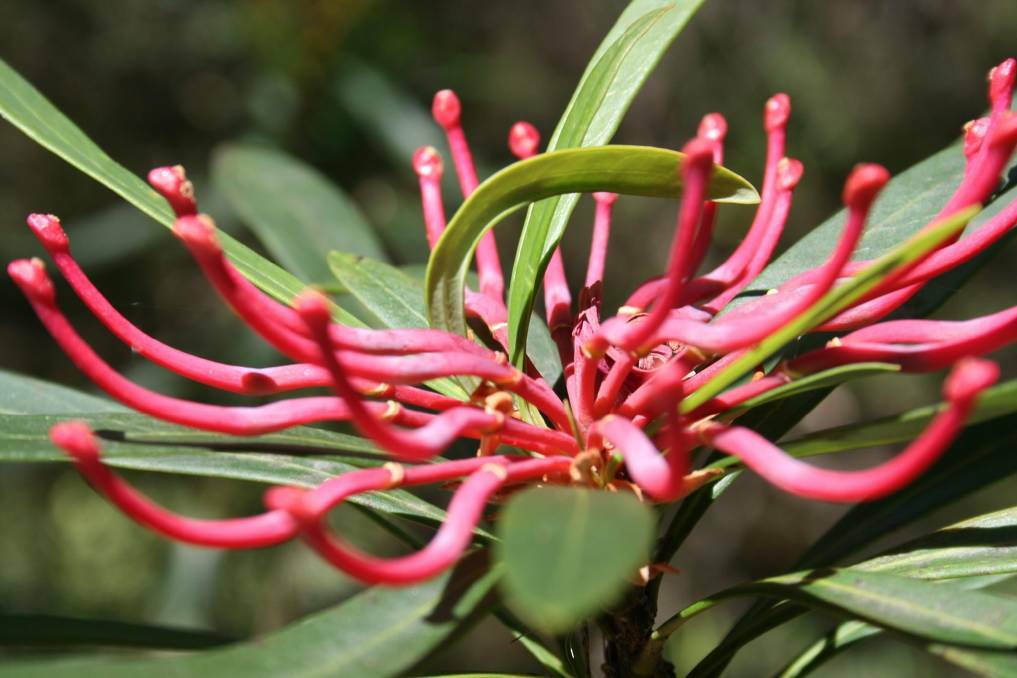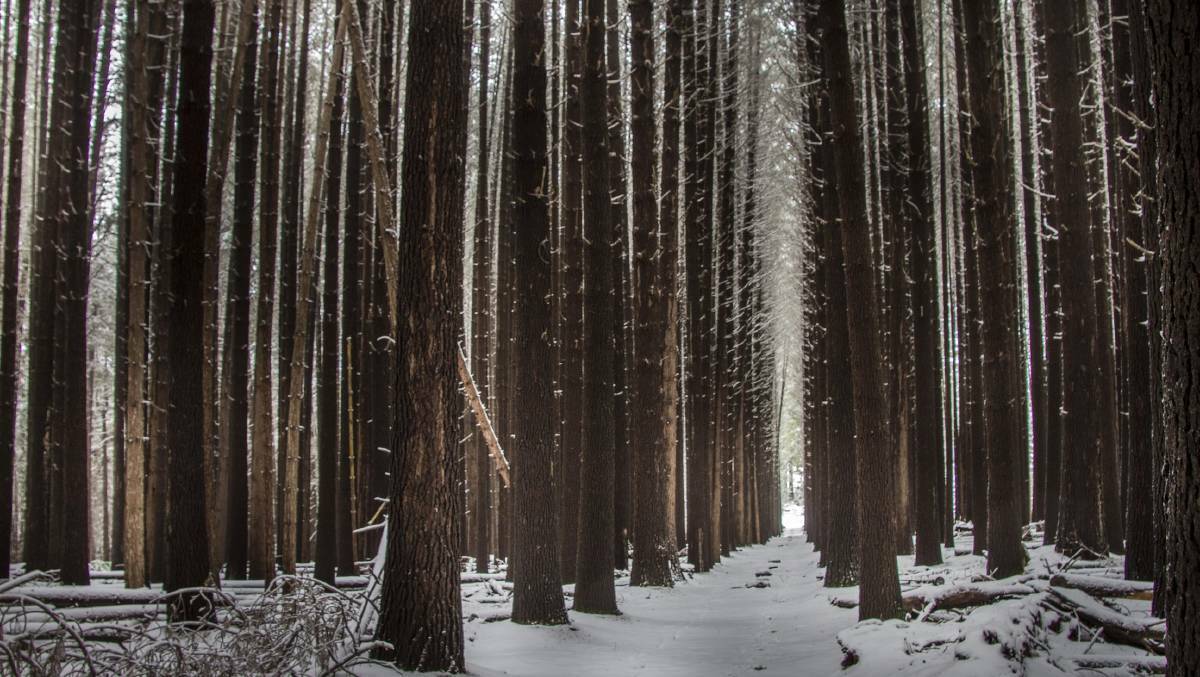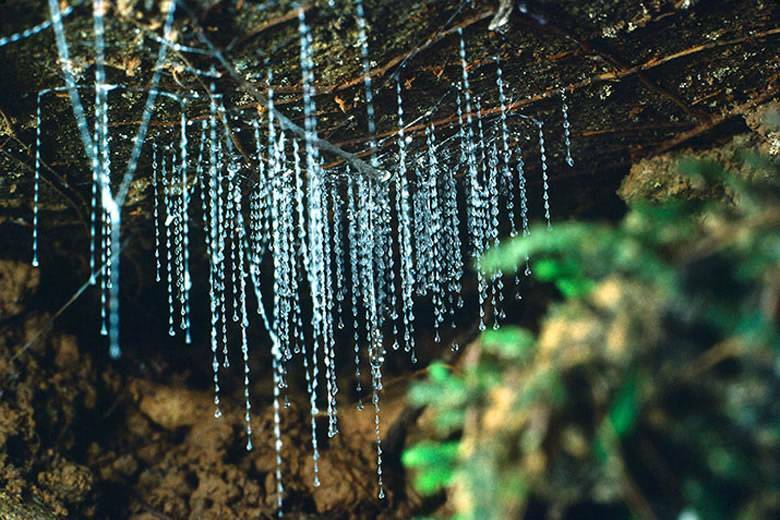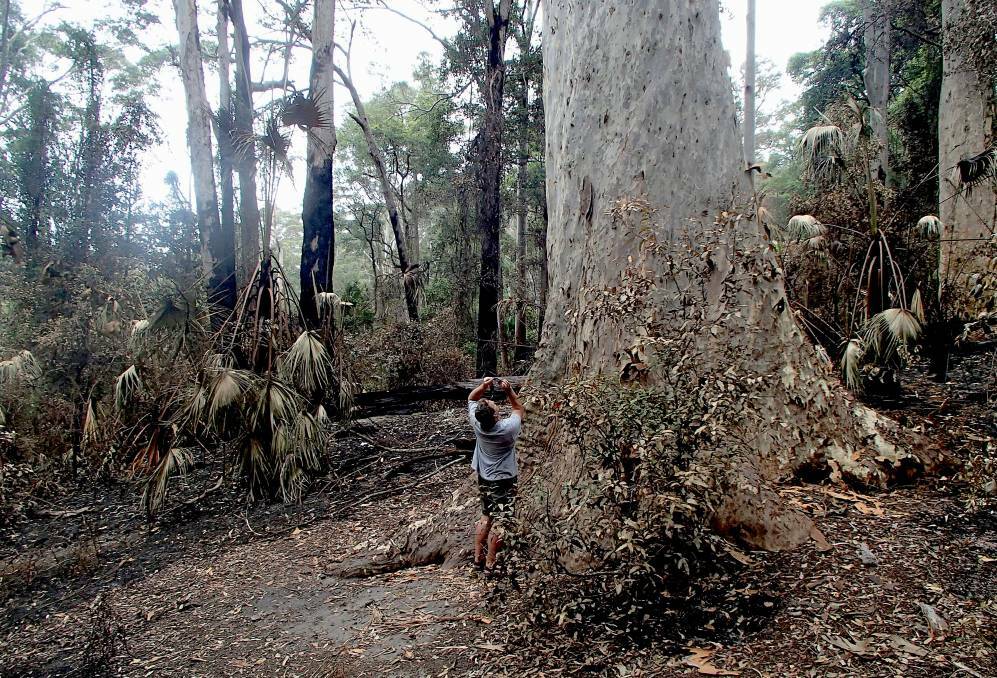Over the last decade this column has prided itself on seeking out and throwing the spotlight on many of our region’s natural treasures. Secret places that instil a sense of wonder and delight when visited, from the South Coast to the Snowies and the Southern Highlands, sadly the areas hit hardest by the recent bushfires.
Create a free account to read this article
$0/
(min cost $0)
or signup to continue reading
While the loss of human life and that of our native fauna has been well-documented, today I share with you some of our natural wonders that have been affected by fire. Oh, and rather than publish the heart-wrenching post-fire photos of these treasures (some of which have reduced your hardened akubra-clad columnist to tears), I’ve decided to only feature photos reminding us of their wonder.
Penance Grove
Not far off the Kings Highway east of Braidwood, secluded in Monga National Park was a patch of giant tree ferns (Dicksonia Antarctica) and Plumwoods (Eucryphia moorei), some four metres wide, which when you walked through reminded many of the Jurassic era.
The area was given its name after many ferns were stolen in 1986, cut off just above ground level. In recent times, a 250-metre boardwalk has delighted visitors. In fact, it was one of the first places I took visitors en route to the coast – a reminder of the ancient Gondwanaland. If you looked hard enough, adjacent to Penance Grove along the banks of the Mongarlowe River were a number of spectacular Monga Waratahs (Telopea mongaensis).

While at the time of writing the area hadn’t officially been confirmed as lost, I have seen photos which show the devastation of the fire damage at the start of the short walk, photos too heartbreaking to share in this column.
Just last year renowned Jerrabomberra botanical artist Cheryl Hodges featured the waratahs and ferns in an exhibition, Earthly Treasures of our Shire. “It’s just terrible to hear the fire went through such a special place,” laments Cheryl.
This column understand that the SES is working their way around the various firegrounds felling the damaged trees to enable access, but it’s a huge job and it could be some time before we know the extent of the loss at Penance Grove.
Did You Know? The main flower of the Monga Waratah differs to other waratahs in that it can have a cluster of up to 65 individual small flowers or florets.
Sugar Pine Walk

In the remote Bago State Forest between Batlow and Tumbarumba, in recent years many Canberrans and camera-wielding Instagrammers from all over the world have made a beeline to a small copse of towering Sugar Pines (Pinus lamertiana) for a much desired selfie (#sugarpinewalk). In fact, it was one of the most instagrammed places in our region’s extensive plantation forests.
Last year, before the fires, I spoke to some nearby B&B owners who revealed that a significant proportion of their business was from travellers wanting that perfect shot of the 92-year-old forest of exotic Sugar Pines. The towering pines, native to the west coast of the USA, were particularly popular in winter when occasional snow would transform them into a winter wonderland. Some photographers would arrive in the wee small hours, often setting up by moonlight to capture the morning’s golden light through the symmetrical rows of towering trees as the sun rose. Meanwhile, couples were so smitten by the forest, with several weddings held under the cathedral-like canopy.
Unfortunately recent fires have badly burnt the Sugar Pines, reducing the once Instagram sensation to an eerie graveyard of tall black gravestones reaching skyward. However, having developed a thick, fire-resistant bark and open canopy that retards aerial fire spread, Sugar Pine is regarded by foresters as being reasonably resistant to moderate-severity fires. As a result, we may have to wait for a detailed assessment to determine just how badly these pines have been burnt.
Did You Know? Because Sugar Pine resists warp, shrinkage and twist, it is often used for moulding window and door frames and other special products such as piano keys and organ pipes.
Glow Worm Glen

Parts of Bundanoon were burned early this month, razing many houses, especially on the north-eastern side of the Southern Highland’s village.
Unfortunately in this same area, the track leading to Glow Worm Glen, a 200 million-year-old sandstone grotto, and home to one of Australia’s biggest known colonies of glow worms, was also badly damaged.
While I’m yet to receive confirmation on the plight of the glow worms, it is well known that glow worms and their prey don’t respond well to smoke and fire. We can only be hopeful.
Did You Know? Nature lovers have visited Bundanoon’s Glow Worm Glen for over 100 years.
Cave Saviours
Although most structures in nearby Kiandra and Selwyn Resort were razed, but for a woodshed, a brave crew of just six National Parks and Wildlife Service staff heroically saved the historic Yarrangobilly Caves precinct and buildings after working tirelessly to defend the property for more than 36 hours.
As for the caves themselves, Canberra speleologist and cave adventurer John Brush of Wanniassa fears “the impact on the landscape … is going to be pretty dramatic as it was a very hot fire”.
“In some spots the fire was pretty hot and that could spall off the layers of limestone on the surface, especially if trees fell over and burnt after the fire front,” says John. “Whatever happens on the surface can affect the drip water chemistry below, the very genesis of Yarrangobilly’s caves.
“The cave crickets who venture out of the caves at night to feed may also struggle to find food in the fire-ravaged landscape, so there will be broader ecological impacts on the caves precinct.”
Murramarang Marvels survive
When a fire raced through Murramarang National Park just north of Batemans Bay, many nature lovers, including John Perkins of Friends of Durras, were especially concerned for the plight of a number of iconic big trees in the park. These included one aptly-named giant Spotted Gum (Eucalyptus maculata), nicknamed ‘Old Blotchy’.
After persistent lobbying by the Friend of Durras, the patch of forest harbouring Old Blotchy was a late addition to Murramarang National Park in 2004, four years after the national park was extended by 9600 hectares as a result of a Regional Forest Agreement.

Measuring about three metres wide (at a human’s breast height – the point at which foresters measure a trunk’s girth), and rising more than 50 metres above the forest floor, Old Blotchy is regarded as one of the biggest of its species.
Fire maps showed that the parcel of forest home to Old Blotchy was badly burnt so it was with trepidation that John recently walked in to check on the damage.
“Big old trees are particularly at risk of destruction as they have termite damage and hollows where embers can intrude,” says John.
However for John, “it was an incredible relief to see the big tree still standing!”
“Remarkably, despite all the surrounding forest being burnt, Old Blotchy survived,” says John with a sigh of relief. “Embers got into a hollow limb high up in the canopy but fortunately did not get going”.
According to John, many of the other big trees also survived the firestorm.
It will be many summers before Murramarang National Park returns to its former glory, but it is good to know that amid so many tales of sadness there are also stories of survival and hope.
Long live Old Blotchy. Well, at least until the next fire.




